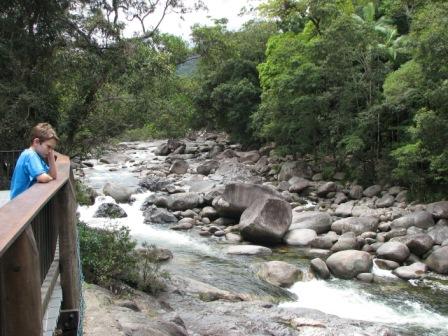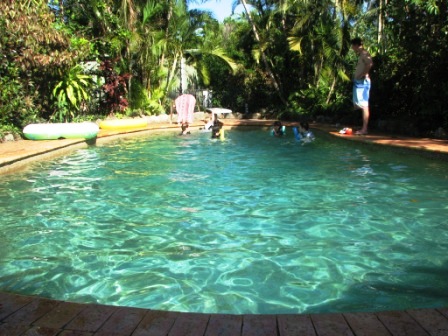End of Term Excursion: Aboriginal Culture

The Laura Dance Festival was the pinnacle focus of the trip and neither Boy, Step-father or I were disappointed. Some photos appear below but also check out my info article over at Imaginif: The Culture of Dancing Corroboree for Child Safety.
Whereas Boy has previously visited Split Rock at Laura, my attendance (and a handy tour guide book) ensured a degree of Rock Art painting, culture and myth appreciation. Boy has grown up around Indigenous Australian culture, has heard the words, the language, and knows some of the myths (Quinkins are a favourite in our family), but he had no deeper appreciation than knowing that bread from the bakery can be bought sliced or whole.
 Imjim Quinkan - A malevolent spirit. Still very feared.
Imjim Quinkan - A malevolent spirit. Still very feared.The story has it that the Quinkan bounces across the rocks on his long knobbed penis. OUCH! The women who married Quinkans are portrayed with breasts that stick out sideways. The breasts were also used for bouncing across rocks.
Tall Spirit
(they like to hide behind tall Gum trees and can be hard to see)
Another focal point at the Dance festival was meeting up with my foster brother - Joseph McIvor: a celebrated Aboriginal artist, who lived with my family in Cooktown and Cairns during his high school years. Joseph was my brother's best mate and they were always together. It seemed logical that Joseph just live with us and have the opportunity to extend his art through training and access to resources that he may not have otherwise been able to gain access to. Joseph held a Didgeridoo making stall at the Laura Dance Festival and Boy got right into the making of a Didj (pictured).

Following our attendance at the Laura Dance festival, we spent 3 days in Cooktown, a place I lived as a teenager and young first time mother. The weather was miserable and freezing (by Far North Queensland standards) but Boy's highlight was the abundance of Wallabies around our cabin. The following photo's are of wild wallabies - not zoo tamed creatures.



















































